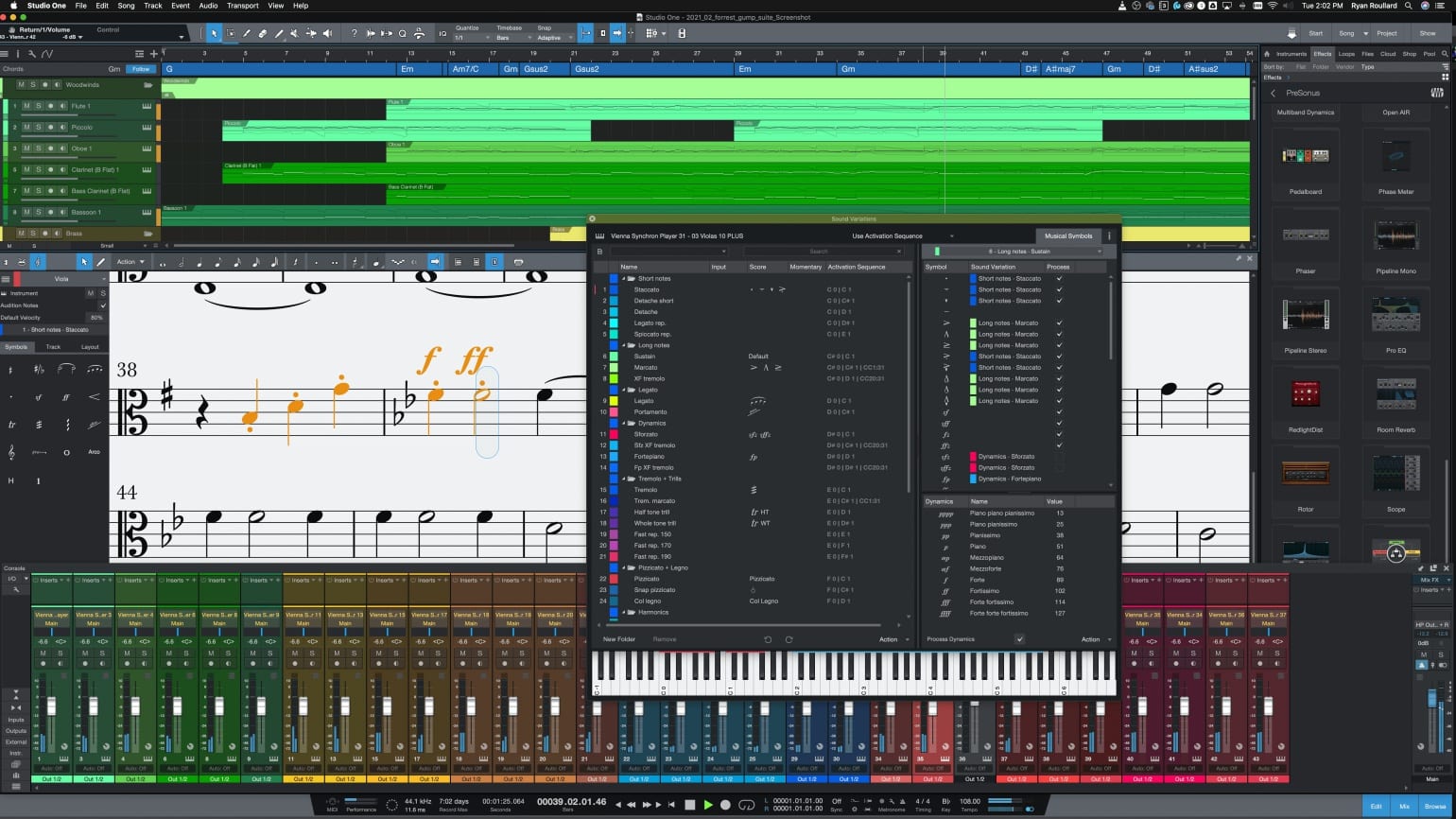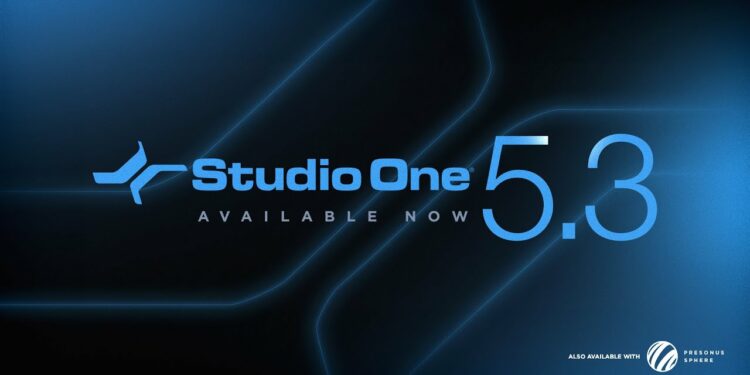Dropout protection studio one что значит
PreSonus Studio One 5.3 добавляет новые функции при написании партитур и улучшенный экспорт данных
Минорное обновление сконцентрировано на улучшении пользовательского опыта.
PreSonus выпустили промежуточное обновление DAW PreSonus Studio One 5.3. Наравне с улучшениями пользовательского интерфейса и рабочих областей, программа получила ряд новых функций в области написания партитур и живого исполнения.
Studio One 5.3 получила поддержку музыкальных символов исполнения, что упростит написание партитур и работу с библиотеками. При написании нот музыкальные символы теперь активируют соответствующее звукоизвлечение в реальном времени. Для работы функции достаточно, чтобы используемая библиотека поддерживала соответствующий функционал.
По словам разработчиков, символы связаны с мэппингом библиотеки. Новое окно Musical Symbols в нотном редакторе позволяет смотреть события в партитуре в реальном времени, а также добавлять и убирать символы простым перетаскиванием. Отмечается, что добавленные символы появляются одновременно в редакторе Note Editor и окне Score View.
В информации о мэппинге в окне Sound Variations, представленном в предыдущем обновлении, разработчики добавили данные по используемым MIDI-каналам. Так, например, программа стала показывать активные секвенции, используемые виртуальные инструменты и другую полезную информацию.

Обновление также добавляет ряд новых опций в области сохранения, экспорта и архивирования проектов. Пользователи могут прямо из программы создать полный архив проекта в формате ZIP для его последующего переноса на другие компьютеры или в облако PreSonus Sphere. По словам разработчиков, функция будет полезна для резервного копирования песен, проектов и живых сессий.
Функция Convert To теперь поддерживает экспортирование и архивацию всех связанных медиафайлов и альтернативных версий. Пользователи могут выбрать степень и формат сжатия аудиофайлов.
Функциональность Chord Track подверглась доработке. Теперь события Chord можно конвертировать в отдельные события Note посредством простого перетаскивания данных между треками Chord Track и Instrument Track. Studio One 5.3 также научилась переносить и конвертировать данные между аудиодорожками, треками MIDI-инструментов и аккордовыми треками.
Страница Show Page получила поддержку перетаскивания цепочек эффектов и патчей, в то время как сама программа обзавелась полной совместимостью с протоколом MIDI MPE при работе с VST-плагинами. Наконец, разработчики добавили новые шорткоды при работе с контроллерами PreSonus ATOM и PreSonus ATOM SQ.
Studio One 5.3 распространяется бесплатно для всех пользователей PreSonus Studio One 5 и подписчиков PreSonus Sphere. Получить больше подробностей об обновлении можно на официальном сайте разработчиков.
Dropout protection studio one что значит
I’m Windows based and this feature has never worked for me. I’d hoped it would stop dropouts (as per it’s name) however it always creates more dropouts when I turn it on.
I’ve tried this on over 4 different PC/Audio card combination with the same results.
I’ve created a set of 8 tests which progressively tax the CPU using only native S1 plugins. In the video I show the results where pops and crackles start happening at Minimum, Medium and Maximum dropout protection settings.
Based on my testing I think this feature doesn’t work at low latency on Windows (buffer for test was set at 256)
If anyone else is interested in running the tests PM me and I’ll send you a link to the test projects.
Dropout Protection settings will vary from setup to setup.
P.S. You’ll get better if you. Please create a signature* with your PC, SW and HW specs and versions, so we might better help you. now and in the future.
See mine or another users at the bottom of their posts for an example.
You can create one in your User Profile.
I don’t ever use Drop Out Protection until recording vocals.
When it’s active and you have a channel with a CPU hungry VST set to monitor, it taxes the system. So I turn it off until doing vocals, or I don’t have monitoring on heavier taxing channels.
Win10x64 (Eng), Studio One 5.x, 32GB DDR4 RAM, Intel i7 5820, nVidia 960, Focusrite 18i8. Native Instruments Komplete Kontrol S88, Native Instruments Komplete Kontrol S61, Presonus FaderPort 8.
scottyo7 wrote Dropout Protection settings will vary from setup to setup.
Dropout protection studio one что значит
I have conducted my tests again (as per Niles in the Smash Latency Thread) Here is what I have found.
Before 3.5 the Test I did to see how fast a virtual instrument could respond gave 410 samples at 128 buffer. The best I got was 200 down at the native 32 sample buffer.
Now with 3.5 and the Instrument Low Latency mode switched ON I got these results at various buffers. Also the 16 samples option has appeared now with my thunderbolt Focusrite Interface. I also tried various settings for the Dropout protection and got consistent results there. I also used Sample One as the virtual Instrument with Niles‘ click sound as the reference waveform. The power switch for this was green as well in Low Latency Instrument mode.
128 = 210 samples, 64 = 340 samples, 32 = 240 samples and 16 = 200 samples. Not sure what 64 was higher than the rest. Let us say 200 samples = 4.5 mS latency. These figures do seem a bit strange. e.g. 128 buffer being pretty good but the 64 buffer was way high.
Now with Instrument Low Latency monitoring switched OFF i.e. native latency being used, Dropout ProtectIon set to Minimum or i.e. OFF not being used, I got these results and they are consistent every time.
16 = 130 samples, 32= 170 samples, 64 = 170 samples, 128 = 410 samples.
These are pretty consistent as per pre 3.5 but I think in my case the sheer fact that the 16 samples buffer option is now available it has just dropped this down one step further. 130 samples = 2.9 mS. I am feeling it very fast here in terms of response. I am getting no clicks or pops at this setting either.
I’m getting noises when using fader automation on the master fader. The noise is essentially the audio at 0 db. (no attenuation) for a very short amount of time. The shortness of the error makes it sound a bit like a «pop».
Anyone else seeing this?
Here are some particulars to this:
When I set Dropout Protection to Minimum or Low, I don’t get noise/popping..
When I set Dropout Protection to High or Maximum, I do get the issue.
I also have «Process Precision» set to 64 bit, and when I set that down to 32 bit, the problem is at least lessened. if not removed.
It’s fairly easy to replicate.
Drop some audio to a track.
Create some automation on the master fader. I used a very slow (30 second) fade out and back in using only 3 automation points.
The issue will present itself on both playback and the resulting mixdown file.
It happens with or without a control surface present.
I haven’t yet tested whether this happens on channel automation too, I only had a short time to test it today.
I have had to increase my interface audio buffer size in my interface significantly,
thereby increasing hardware latency, in order to just play back a song comprising of just 20 audio tracks with trivial plugins (channel strip, eq, comp, a couple of reverb / delay busses) without drop-outs and glitches.
This is contrary to all testing. I wonder why?
The very same project can be played back fine on the lowest possible interface audio buffer setting in V.3.3.4 without any problems.
Can you zip the song up or a cut down version that still exhibits the same behavior?
Basically as it stands, V 3.5 is unusable for me.
I will post more details when I have done some structured analysis and captured some
performance counters.
OK but I am more concerned with the paramter asked for in the DP LLM thread.
Which is where we probably should move this.
Anyway the song PM to me would be great.
Yes by all means please move this to the DP LLM thread.
That was me sorry hit wrong button. Should have been my edits in your reply via my post. Instead I edited your post.
Moving too fast today.
Hardware monitoring is slightly better than the low latency monitoring
? Do you have both blue and green Zs or are you talking about your direct monitor knob on the device?
Good debug.
Dropout protection studio one что значит
Николай давай через личку общаться и тут не офтопить, я отправил тебе сообщение)
(давай на ты, мы ж вроде простые люди а не посол шведский:))
группы вконтакте у меня нету, когда творческий кризис начнется тогда создам..может быть))
есть прожд, там почти все треки
http://cj-kremlevsky.promodj.ru/
Даниил Левин
1 мая 2010 в 19:54
А давайте сравним Studio 1 и Pro Tools HD 8)))))))))))))))))))))))))))))))))))))
ААХАХАХААХАХАХ. Точняк. Мой первый вопрос по сравнению. Поддерживает ли Presonus DAT плагины.
#59
Во во именно, секвенсоры единственно е чем отличаются так это интерфейсом, удобством и набором функций и плагинов.
И Studio One это та daw которая подошла мне по этим параметрам.
В аудиозаписях два примера СО протиф ФЛ..
Sample 1 vs. Sample 2
Илья Permich Перминов
16 авг 2010 в 22:36
и? ты чувствуешь там разницу?
——————————
Dropout protection studio one что значит
I’m Windows based and this feature has never worked for me. I’d hoped it would stop dropouts (as per it’s name) however it always creates more dropouts when I turn it on.
I’ve tried this on over 4 different PC/Audio card combination with the same results.
I’ve created a set of 8 tests which progressively tax the CPU using only native S1 plugins. In the video I show the results where pops and crackles start happening at Minimum, Medium and Maximum dropout protection settings.
Based on my testing I think this feature doesn’t work at low latency on Windows (buffer for test was set at 256)
If anyone else is interested in running the tests PM me and I’ll send you a link to the test projects.
Dropout Protection settings will vary from setup to setup.
P.S. You’ll get better if you. Please create a signature* with your PC, SW and HW specs and versions, so we might better help you. now and in the future.
See mine or another users at the bottom of their posts for an example.
You can create one in your User Profile.
I don’t ever use Drop Out Protection until recording vocals.
When it’s active and you have a channel with a CPU hungry VST set to monitor, it taxes the system. So I turn it off until doing vocals, or I don’t have monitoring on heavier taxing channels.
Win10x64 (Eng), Studio One 5.x, 32GB DDR4 RAM, Intel i7 5820, nVidia 960, Focusrite 18i8. Native Instruments Komplete Kontrol S88, Native Instruments Komplete Kontrol S61, Presonus FaderPort 8.
scottyo7 wrote Dropout Protection settings will vary from setup to setup.













